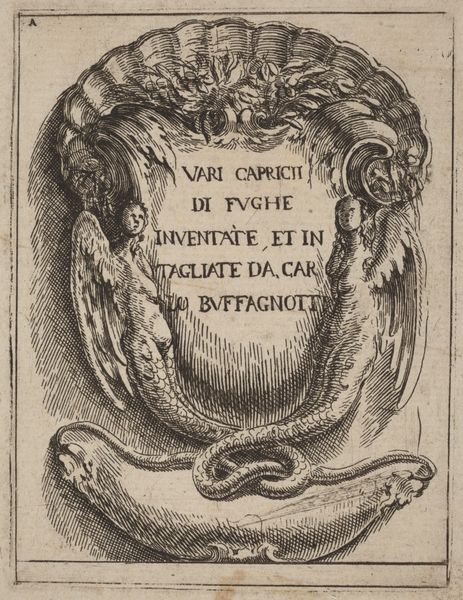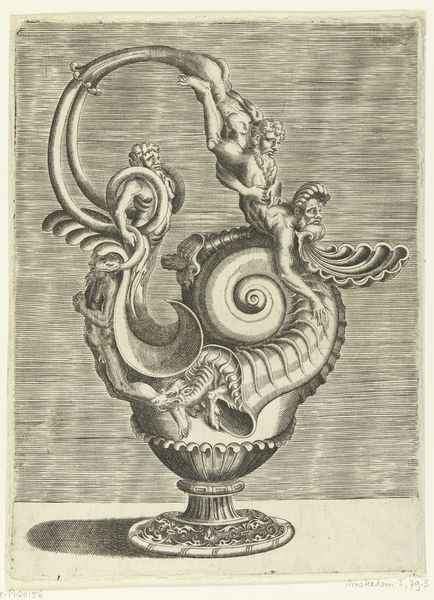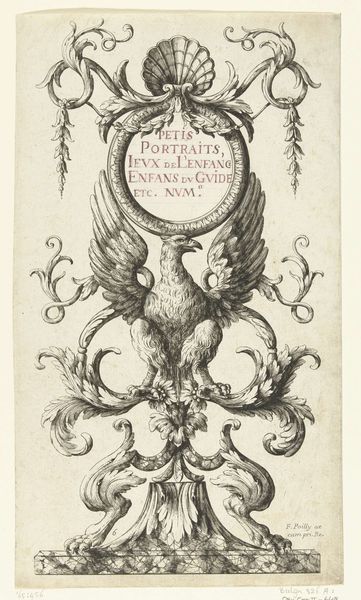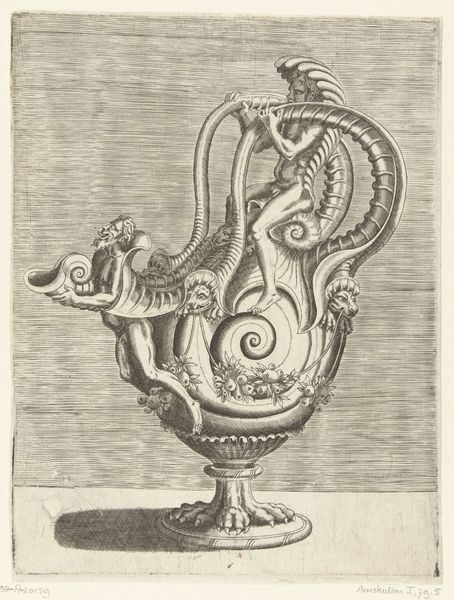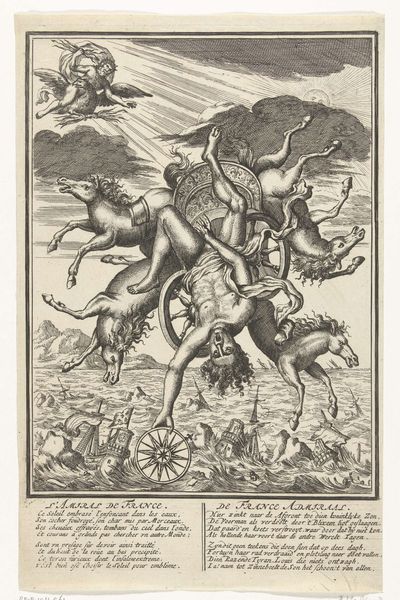
drawing, print
#
drawing
#
pen drawing
#
mechanical pen drawing
# print
#
pen illustration
#
pen sketch
#
old engraving style
#
personal sketchbook
#
pen-ink sketch
#
pen work
#
sketchbook drawing
#
sketchbook art
Dimensions: sheet: 9 5/16 x 6 9/16 in. (23.7 x 16.7 cm)
Copyright: Public Domain
Curator: The artwork before us, “Basilisk Supporting the Arms of the city of Basel,” was created by Master DS in 1511, and we can appreciate it as a print or drawing using pen and ink. What are your initial impressions? Editor: There’s a certain playful dread evoked by the imagery; the meticulous hatching suggests detail and precision, contrasting with the imagined beast and whimsical composition. I’m interested in how this print functioned. Was it a commodity? A singular creation? Curator: The use of line is quite striking, wouldn't you agree? Observe the ways in which the artist uses varying densities of hatching and cross-hatching to describe form and texture. The basilisk itself, half-rooster, half-serpent, supports the heraldic shield. Its gaze meets ours, an assertive declaration of Basel’s identity. We can appreciate how the line defines not just the physical being but also its symbolic presence. Editor: Indeed. The hatching and cross-hatching would’ve demanded significant time and expertise. Consider also the physical labor involved in the printing process itself—the preparation of the plate, the application of ink, and the pressure exerted to transfer the image onto paper. The texture isn't just aesthetic, it speaks to craft and skilled handiwork. What kind of social or economic exchange was connected with this piece and its technique? Curator: We could discuss the interplay of the natural and artificial in the surrounding ornamental border—how botanical forms are rendered with almost mechanical precision. It challenges the simple binary of nature versus artifice. Editor: The question I return to is always: who commissioned this, who made it, and what materials did they have at their disposal? Curator: Those are intriguing lines of inquiry. Ultimately, considering the visual language and skillful construction alongside materiality can amplify the impact and importance of the piece. Editor: Precisely, and it is through these material questions that the artist’s intent is unveiled and contextualized within broader economic and cultural fabrics.
Comments
No comments
Be the first to comment and join the conversation on the ultimate creative platform.
